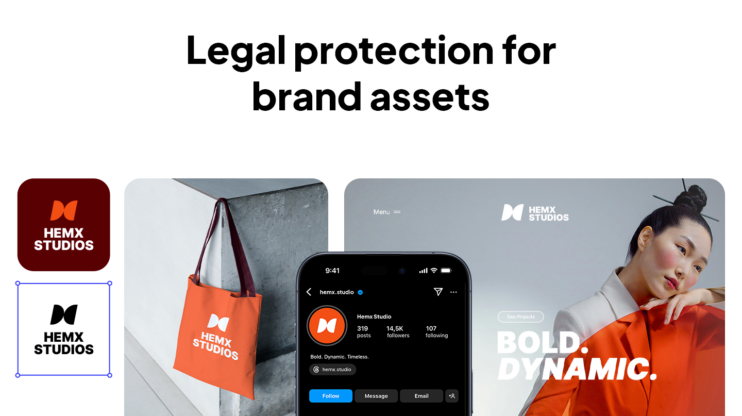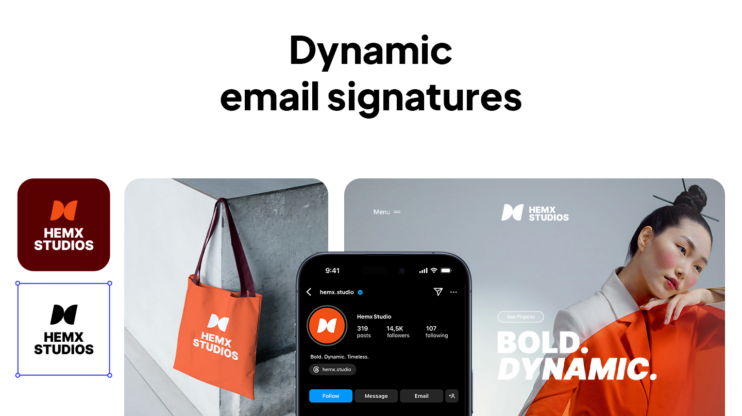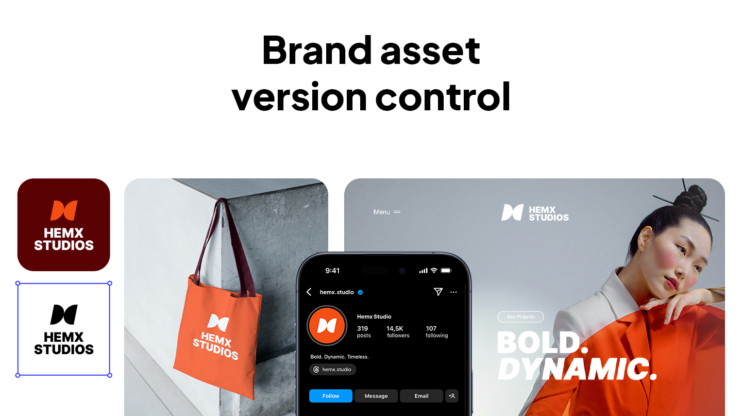Marketers have long lamented print advertising’s shortcomings when it comes to tracking returns on advertising dollars. Philadelphia retailer John Wanamaker famously complained, “Half the money I spend on advertising is wasted; the trouble is I don’t know which half.”
The difficulty in shedding light on this modern marketing dilemma only seems to get worse. When it’s impossible to rely on tracking data from big advertising platforms like Meta or Adsense, how do businesses measure ROI on printed flyers vs digital ads?
I’ll uncover answers to the top questions that keep advertisers up at night:
- How to track ROI on printed flyers vs digital ads
- Which method (print or digital) delivers better ROI in specific situations
- How to combine both channels for the best of both worlds
ROI is more than just a feeling. But what’s behind that magic number? Let’s do the math.
What are marketers trying to measure with ROI?
When marketers talk about ROI, it’s a reflection of how confidently they can tie results to their efforts.
In and of itself, ROI is no mystery:
ROI = [(Gain – Cost) / Cost] × 100
If you spend $500 on a campaign and earn $1,500 in profit, your ROI is 200%. It’s concrete proof that advertisers get back a good return on their investment.
Key metrics that signal a strong ROI
A handful of commonplace metrics form the backbone of measuring ROI.
- ROAS (Return on Ad Spend)
How much revenue do you generate per dollar spent?Example: Spend $500, earn $2,000 = 4x ROAS
- Conversion Rate
What percentage of people took the desired action (like filling a form or buying)?
- Customer Acquisition Cost (CAC)
Your total cost to acquire one new customer.
- Lifetime Value (LTV)
The value of a customer over time is crucial for subscriptions or recurring purchases.
- Profit-Based ROI
A broader metric that includes ad spend, staff time, tools, and fulfillment costs.
Each one offers a different angle on performance. Used together, they paint a picture of what’s working and what’s not.
ROI is really about attribution
How can you make a decision about whether the money you spent on marketing was worth it if you don’t know where to give credit? That’s why ROI is about attribution. That’s also why it’s harder to measure ROI from printed flyers vs. digital ads.
Comparing flyers vs digital ads at a glance
| Factor | Digital Ads | Printed Flyers |
| Tracking Precision | High (automated) | Medium to Low (manual setup required) |
| Real-Time Data | Yes | No |
| Scalability | Global reach | Local targeting only |
| Cost Efficiency | Adjustable to budget, pay-per-click | Higher upfront cost per 1,000 impressions |
| Attribution Tools | Pixels, analytics, UTM links | QR codes, promo codes, call tracking |
| ROI Confidence | High (clear attribution path) | Variable (depends on tracking method) |
| Best For | Fast, data-driven campaigns | Local events, physical offers, and brand trust |
Why is attribution easy in digital campaigns?
Tracking ROI in digital campaigns is easy because attribution and the metrics you need are built right in.
Most online ad platforms show you:
- Automated attribution (so you know which ad triggered the result)
- Instant performance metrics (impressions, clicks, conversions)
- Full-funnel tracking (from ad view to purchase or signup)
Digital marketing is 100% reliant on this data, so advertisers can track ROI and make informed decisions.
When digital ROI gets messy
Digital ROI isn’t perfect. To some degree, it still suffers from the same unpredictability of human nature. Not to mention mundane technical barriers.
- Attribution gaps occur when a customer might see an Instagram ad but actually converts after searching for you on Google.
- Privacy updates, cookie loss, iOS restrictions, and ad blockers limit what you can track.
- Click fraud, Bots, or accidental clicks inflate your spend without adding value.
That’s why, even with digital campaigns, it’s smart to look beyond dashboards and double-check results against your actual business outcomes.
Why is attribution challenging in print advertising?
Compared to digital marketing, flyers and printed marketing materials come up short, with no sure-fire way to correctly attribute which action contributed to the result. Attribution depends on figuring out creative ways to use iffy methods like:
- QR codes
- Promo codes
- Call tracking numbers
- And vanity URLs
Even then, there’s no guarantee that customers will use them. So, there’s no dashboard telling you how many people saw your flyer, picked it up, or acted on it.
In my personal experience, the general public takes the path of least resistance. That may not include mentioning a discount code or cooperating by scanning that QR code like you had in mind. Unless you give them a reason to leave a trail.
How to measure ROI on printed flyers
Flyers don’t track themselves, but that’s not to say it can’t be done. Advertisers often use a combination of tracking methods to measure ROI on printed flyers, including a hybrid approach that uses printed flyers to send customers online, where they can take advantage of digital tracking.
Tried and true tracking methods for printed flyers
You can measure ROI on printed flyers with a modern twist on marketing classics:
- QR codes with UTM tracking – Marketers use special URL parameters, called Urchin Tracking Module Parameters (UTM), and tools like Google Analytics to track digital campaigns. Use UTM tracking in print materials via a QR code that leads to a unique, campaign-specific URL.
- Vanity URLs with redirects – Use short, easy-to-remember URLs (e.g., yoursite.com/fall). Set them to redirect to a landing page with UTM tags. This can help to engage people who dig in their heels at the thought of scanning a QR code.
- Promo codes or flyer-only discounts – This is a spin on the classic radio call-to-action, “Tell them you heard this on 104.7 and receive 20% off.” Assign a unique code printed only on your flyers (like FLYER25). Track redemptions to see how many people responded to the offer.
- Dedicated phone numbers or extensions – Use a call tracking tool to generate a flyer-specific phone number. Every call to that number is attributed to the flyer, and you’ll have call data to mine for insights.
- “How did you hear about us?” scripts – Train your team to ask this, and to record responses. I’ve adapted this to a hybrid approach, with similar questions on a sign-up form. My suggestion is to make it easy with multiple-choice answers, like “online” or “flyers.” Path of least resistance, right?
- Holdout groups for split-testing printed flyers – You can do a version split testing or A/B testing with printed flyers. Flyers go out to one ZIP code but not another. You then compare conversion rates or sales in each. This helps isolate the impact of the flyer drop.
Advanced and hybrid tracking tactics
Printed flyers can benefit from connecting real-world actions to trackable online actions.
- Flyer-to-digital retargeting – Send flyer recipients to a landing page with a Meta or Google pixel. You can then retarget visitors who scanned your QR code or visited your custom URL. This is a good way to reach customers who have already shown interest in your brand, services, product types, and so on.
- POS redemption tracking – If your point-of-sale system allows it, tag flyer-driven redemptions, whether via code, unique SKU, discount, or manual input by staff. Integrations with traffic sensors and POS systems help retailers determine traffic-to-purchase conversion rates. Online businesses can monitor traffic and conversions to personalized URLs (PURLs) or landing pages.
- Foot traffic analysis for larger locations – Use in-store data, timestamps, or simple visit tracking to identify spikes in foot traffic after a flyer campaign. Wi-Fi and Bluetooth tracking services use location data and Wi-Fi pings to generate foot traffic reports and visitor insights. Just be mindful of your customers’ privacy, and go with an ethical and transparent provider that uses anonymized data.
Tools to track ROI on printed flyers and digital campaigns
Getting familiar with a few basic tools can help you develop effective tracking methods to measure ROI on printed flyers and digital campaigns, without overcomplicating things.
Recommended ROI tracking tools by use case
| Use Case | Tool | What It Does |
| Phone call tracking | CallRail | Generates and tracks campaign-specific numbers |
| QR code creation | Canva / VistaPrint | Adds branded QR codes to printed designs |
| Landing pages | 10Web / Carrd / Mailchimp | Creates fast, flyer-specific landing pages |
| Analytics | Google Analytics 4 | Tracks QR visits, conversions, and bounce rate |
| UTM tags | URL builders | Collects tracking data using custom URLs. |
| Promo code setup | Shopify / Square / WooCommerce | Sets up flyer-only discounts or codes |
Real-world examples of measuring ROI on flyers
Flyers can be a shot in the dark, but when businesses take the time to build in useful tracking elements, print can perform and even outperform digital. A couple of caveats: it must be in the proper context, and it usually involves passing along discounts, giveaways, or freebies. Or, the possibility of one.
Here are three examples where flyer campaigns can drive clear, measurable ROI.
- An auto shop increases new customer acquisition – A local auto repair shop mails out flyers to two nearby ZIP codes. The flyers feature a QR code linking to a specific landing page offering a discount for using the scheduling tool. The QR code’s URL includes UTM tags that use Google Analytics to track visits.
- A gym launches a new class with promo codes – A new gym promotes a new yoga class by distributing 1,000 flyers and a flyer-only code: FREEYOGA. Anyone using the code online or in person gets their first week free, encouraging people to cooperate with your tracking efforts.
- A dental office mixes old-school and digital – To reach new movers, a dental clinic sends postcards with an easy-to-remember URL (smiletown.com/welcome) and a unique phone number. New patients get a special offer when they use a tracking method. Both are tracked separately.
When flyers make sense, and when they don’t
Pamphlets, brochures, flyers, and the like have been around for hundreds of years. While they admittedly lack some of the sophistication of digital marketing, I’d wager they’re not going away anytime soon. In the right hands, printed materials are a powerful marketing tool.
Here’s how to tell when to go all-in on print and keep your flyer from going straight to the recycling bin.
When flyers make sense
- You’re running a local campaign – Store openings, neighborhood events, or service-area promotions work best when you’re targeting your immediate neighborhood.
- Your product or service relies on community trust – Dentists, real estate agents, and personal trainers: if your brand depends on personal connection or credibility, a flyer can feel more real than a pop-up ad.
- Your audience isn’t digitally obsessed – Most people might use the internet daily, but that doesn’t mean they trust or engage with digital ads. Flyers work well for audiences who prefer something tangible or who refuse to browse online without an ad blocker.
- You have a simple, direct offer – “Bring this in for 20% off” or “Scan to RSVP” perform well. To say that drawing someone along your online sales funnel is more difficult is a painful understatement.
When flyers don’t make sense
- You’re selling online-only products with thin margins – Physical distribution can be too costly and time-consuming when your goal is quick, high-volume ecommerce sales. That doesn’t mean online sellers don’t take advantage of print. You may have seen ULINE’s inexplicably large catalog showing up in the mail, for example.
- You’re targeting ad-savvy digital natives – If your audience spends all day scrolling online and rarely checks the mail, they’ve got a blind spot for flyers.
- You need detailed user data or rapid iteration – Flyers don’t offer easy A/B testing, funnel tracking, or real-time performance dashboards. Use them when you can afford slower insights.
Your best marketing shows up where your audience lives, with a message they trust, and in a format they’re comfortable with.
Smarter ROI measurement for better marketing
Flyers and digital ads aren’t at odds, but they are decidedly different tools in separate toolkits. But, for cases where printed flyers make sense, there’s no drawback to using one to enhance the other. It boils down to this:
- Digital is easy to track, but it’s everywhere online. You’ll know what’s working quickly, but ad fatigue and competition are high.
- Flyers are harder to track, but could be in the right place, at the right time. If your audience tends toward offline or in-person behavior, a well-placed flyer might outperform an excellently targeted ad.
- ROI is about numbers, but the numbers benefit from nuanced interpretation. You don’t need to catch every little signal to get the big picture. Find what’s moving the needle, and go from there.
- Know your customers, and where they’re likely to cooperate with tracking efforts. If you know your customers won’t bother with QR codes, neither should you. Finding innovative ways to track behavior and measure ROI in advertising always pays off.
When in doubt, start testing landing pages, brand messaging, and experimenting with discount codes and personalized URLs. 10Web can help you find what works, then deploy your winning strategy at scale.
Describe your brand and get complete brand assets.
Go from idea to brand in minutes.
FAQ
What is ROI measurement in marketing, and how is it calculated?
ROI (Return on Investment) tells you how much profit you earned from a marketing effort.
Formula: (Gain – Cost) ÷ Cost × 100.
For example, spend $500 and make $1,500 → ROI = 200%.
What's the difference in measuring ROI on printed flyers vs digital ads?
Digital ads offer built-in dashboards with data on ad clicks. Flyers require manual methods like QR codes, promo codes, or custom phone numbers. The biggest distinction between measuring print vs digital ROI lies in the fact that you’ll need some cooperation from real life customers to effectively track results with printed promotional materials.
What are good ROI metrics examples for print and digital ads?
Digital: ROAS, CAC, LTV, Conversion RatePrint: QR scans, promo code redemptions, tracked calls, better sales in target areas
How do you measure ROI on print advertising like flyers?
Use one or more of the following:
- QR codes with UTM links
- Promo codes unique to the flyer
- Call tracking numbers
- Manual surveys or “How did you hear about us?” questions
- A/B testing with specific locations or areas.
How do you measure ROI from digital advertising campaigns?
Use platform analytics to track:
- Spending and revenue per campaign
- Impressions, clicks, conversions
- Cost per lead or acquisition
- Customer value over time
When should businesses choose flyers over digital ads for better ROI?
Choose flyers when:
- You’re targeting a local audience
- Your offer benefits from physical interaction
- Your always-online customers are ad-blind
Can you combine digital ads and printed flyers to improve ROI?
Yes, use flyers to drive digital actions (via QR codes or URLs), retarget those visitors with ads, and turn offline attention into online conversions.










